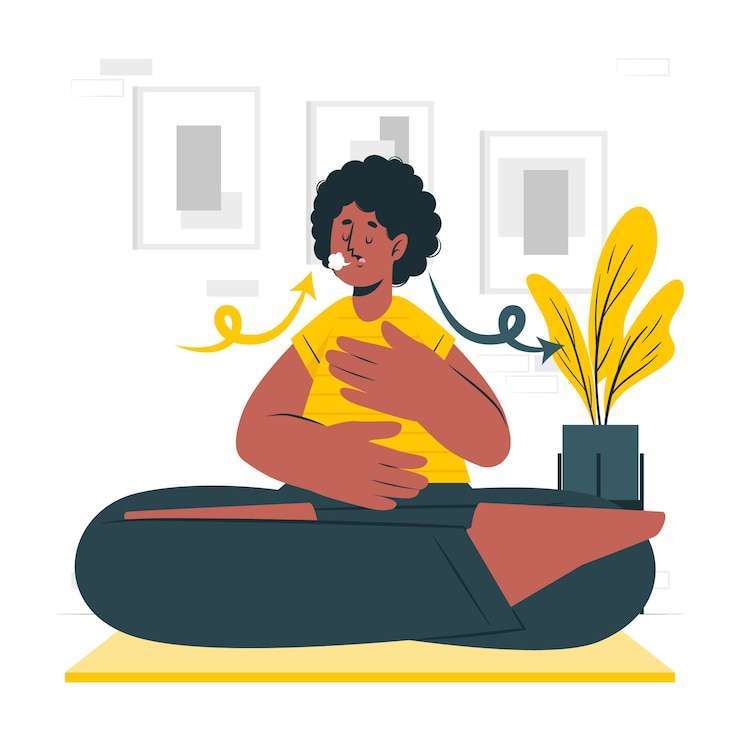Breathlessness
Breathlessness is also known as shortness of breath. The person experiences difficulty in breathing and inability to take a complete breath. It can be a manifestation of numerous medical conditions. These include, asthma, bronchitis, heart diseases, pulmonary embolism, pneumonia, pulmonary hypertension, croup, epiglottitis, panic attacks, anxiety, and chronic obstructive pulmonary disease (COPD).
Symptoms of breathlessness
Shortness of breath is a condition in which an individual is unable to breathe properly. These conditions may also need an emergency CPR. The symptoms include:
 chest tightness
chest tightness- wheezing
- bluish discoloration of fingernails
- excessive sweating
- flaring nostrils
- rapid breathing
- panting
- feeling tired or fatigued.
- anxiety
- panic
- gasping for breath
Managing breathlessness at home
If you are experiencing breathlessness, it is important to seek medical attention to determine the underlying cause and receive proper treatment. However, there are some steps you can take to manage breathlessness at home:
Pursed-lip breathing:
This is a breathing technique that involves inhaling slowly and deeply through your nose and exhaling slowly through pursed lips, as if you were blowing out a candle. This helps to slow down your breathing and reduce breathlessness.
Slow and deep breathing
Taking slow, deep breaths can help to calm your body and improve breathing. Inhale slowly and deeply through your nose, hold your breath for a few seconds, and exhale slowly through your mouth. Repeat this several times.
Sitting upright
If you are feeling breathless, try to sit up straight, as this can help to open up your airways and make breathing easier. Avoid lying down flat, as this can make breathing more difficult.
Fowlers position
It involves elevating the head of the bed to an angle between 30 and 45 degrees. This position helps improve lung expansion, decrease shortness of breath, and reduce fluid buildup in the lungs. It eases breathing and can be used in emergency conditions at home.
Avoiding triggers
If you have a condition such as asthma or COPD, try to avoid triggers that can make your breathlessness worse. Triggers can include exposure to cigarette smoke, pollen, dust, and pollution. There are certain other triggers, such as high altitude, extreme temperature, and exposure to pollutants. The psychological triggers include, anxiety, panic attacks and stress.
Keeping active
Regular physical activity can help to improve your overall physical fitness and reduce the occurrence of symptoms of breathing difficulty. However, it is important to start slowly and build up gradually, as over-exertion can make the condition worse.
Physical activity improves lung function and strengthen the muscles used from breathing. It improves endurance. It also contributes towards reducing stress and anxiety. Exercises can help in improving mood and psychological health.
Maintain ventilation
If you are feeling breathless in a hot or humid environment, try ventilating the area. Using a fan or air conditioning to cool down can help in reducing breathlessness. Adequate ventilation can ensure that the lungs are well-ventilated and free from stale air. It can help in adequate air exchange in the room, leading to improved breathing.
Relaxation techniques
Relaxation techniques, such as meditation, deep breathing exercises, and yoga, can help to reduce stress and anxiety. Reducing stress and anxiety can help in improving breathing patterns. Relaxation techniques helps in improving overall comfort, enhancing physical and mental well-being, resulting in improving the quality of life and reducing the impact of breathing problems.
Pacing
If you have a chronic condition causing difficult breathing, try to pace yourself when you are engaging in physical activity. This means taking regular breaks and avoiding over-exertion.
Seek medical attention:
If your breathlessness is severe or persistent, it is necessary to seek medical attention immediately. It is essential to determine the underlying cause and seek appropriate management for your health condition. Taking risks may harm your life.
It is important to remember that breathlessness can be a serious symptom and should not be ignored. If you are experiencing persistent or severe difficulty in breathing, it is important to seek medical attention as soon as possible. Your doctor will be able to determine the underlying cause and provide appropriate treatment to help manage your symptoms.
In conclusion, managing breathlessness at home involves a combination of breathing techniques, avoiding triggers, keeping active, and seeking medical attention when necessary. By following these steps, you can help to improve breathing pattern and your overall quality of life.





